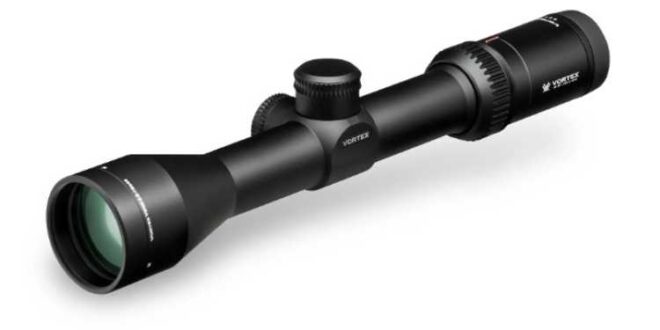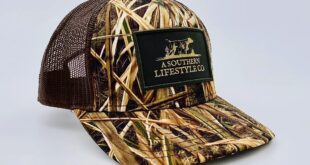Shooting and hunting can sometimes happen in bad light conditions, so you need to find a scope that may be suitable in such conditions. To have successful hunts you must have scopes that gather more light in low light environments. As you are aware, many people prefer hunting at dusk or dawn.
Unfortunately, this is the time when tracking and accuracy of the scope are limited, especially the ones that are not designed to work in these conditions. Therefore, you need to get a low-light rifle scope to improve clarity in these challenging light settings. This article explains how to choose the right low-light rifle scope.
The low-light rifle scope
A low-light rifle needs to have the right features including a high-quality glass. Inferior lenses can provide less resolution when you use the scope in the dark particularly near the edges. Even worse, the images tend to blur at a high magnification level.
With lack of first-hand testing, the ideal way you can figure out the quality of the glass is to look out for the price of the scope and the coating utilized on the lens. One of the biggest factors manufacturers use to set the price is the clarity of the glass. You can find budget scopes that just use cheapest glasses and then compete with some of the best scopes on the market.
The coating can also affect the quality of the glass. When they apply coatings to the lens, it can reduce reflections and glare. The image contrast and light transmission improves which is necessary if you want to shoot and hunt using a low light scope.
You can find the cheap low-light rifle scopes that have a single layer of coating on the surface of one lens. But the best scopes with fully coated lenses tend to have a single layer of coating on the surfaces of all glass. High-quality low-light rifle scopes can also have multi-coated lenses with one lens surface having multi layers.because light transmission is important, it’s a good idea to consider buying scopes with multi-coated lenses.
Objective lens is another factor that affects light transmission. A larger objective lens can allow more light to get into the scope tube and to the eye. The size of the lens varies but they are usually between 20mm and 72mm.
If you want to hunt at dusk or dawn, then choose an objective lens with a 40mm or even a larger size. It’s worth noting that the larger the objective lens, the larger low-light scope, which can be hard to mount on some rifles.
You can also use a reticle like duplex reticles or basic crosshairs. But to try to understand a complex reticle while in the dark can prevent you from taking a shot in time. You can also benefit by using an illuminated reticle. There are illuminated crosshairs that make it simpler to get details and line up the shot in low-light settings pretty fast.
The magnification
If you want to shoot in low-light conditions, perhaps you intend to hunt. This is because target shooting usually happens during daytime. Most hunting usually involves ranges that are at least 200 yards or even less. Therefore, rifle scopes that are 1x to 12x magnification can cover the normal uses. You can find a rifle scope with 3-9×40 which happens to be one of the most popular scopes for low-light hunting.
The scope with 9x magnification allows you to get the right accuracy up to the efficient range of the rifle’s range of the rounds. With 3x magnification, this is the lower end of the scale, though it can assist you to get shots that are within 100 yards or less. But if you desire to hit targets that are beyond a couple of hundred yards, then consider finding a scope with a higher magnification like 10x or even 12x.
Besides these options, some people also prefer to have a fixed scope. A fixed scope usually has a single magnification setting like 3x or 4x. The good thing is that fixed scopes can be lighter and deliver better clarity at a reduced cost compared to those with variable scopes. But the fixed scopes are suitable for situations that need to target a specific range since they cannot be adjusted.
You can also find rifle scopes with magnification that are higher than 12x. There are long-range scopes you can use in low light conditions and they provide 15x magnification or even higher. However, 15x magnification can be a bit higher for deer hunting at closer range to medium range. But you may also need them if you want to hit targets at a few hundreds of yards away.
If you already possess a scope that you utilize for daytime shooting, then consider buying a low-light rifle scope that has a slightly higher magnification. Remember that low-light settings can reduce light transmission and the effective range.
For example, if you have a 3-9x scope that you use during the day, perhaps you should consider choosing 4-12x or 4-10 optic. This extra magnification can give a good outcome to the daytime hunting scope when you use it in the late evening or early morning.
That said, you note that anti-reflection coatings can make a significant difference in rifle scopes. These can be magical as they sometimes almost double the scope brightness without adding weight. These microscopic coatings come from rare earth minerals that reduce reflection loss through wave phase cancellation.
Well, it’s important to know that the raw glass can lose about 4% of the light that gets to it and another 4% that exits. This is what is called air-to-glass transition that causes it. Therefore, you can find several scopes with 6 to 10 lenses and twice that number of air-to-glass surfaces.
When you have uncoated lenses, there is a good chance that you may easily lose over half of the light that gets into the scope. Fortunately, just a single layer of anti-reflective coating can reduce this loss by half.
 HammBurg Be informed with latest news, reviews, entertainment, lifestyle tips, and much more.
HammBurg Be informed with latest news, reviews, entertainment, lifestyle tips, and much more.




